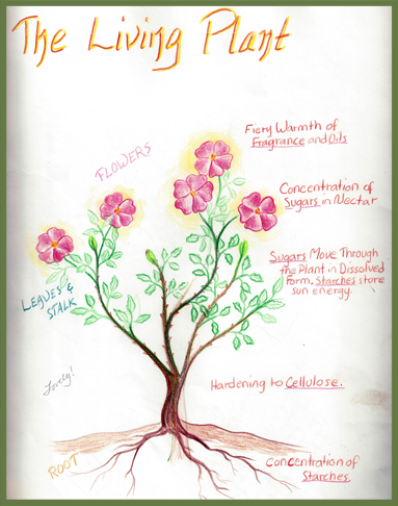Educational Program
Unique Aspects Of The Curriculum
The arts, drama, painting, music, drawing, modeling, etc., are integrated into the entire academic curriculum, including mathematics and the sciences. This model of education through the arts awakens imagination and creative powers, bringing vitality and wholeness to learning.
The Class Teacher stays with the same class over a period of several years, teaching all the main subjects. In some cases a teacher will stay with a class all the way from 1st grade through 8th grade. Other teachers may stay with a class through 5th grade and then cycle back to 1st. Some teachers are most comfortable teaching 6th through 8th grade, while others may feel strongest in the lower grades. We take all of this into account, as well as the importance of stability in a class and the value of long term relationships. We have seen that the practice of staying with a class over time allows teachers to really know the children and help them unfold their gifts. While working with a new curriculum from year to year is an enormous challenge, it also helps to keep the teaching fresh and alive for both teacher and children.
Our Proccess
Textbooks are used on a limited basis in the elementary grades. Instead, the teacher creates the presentation and the children make their individual books for each subject taught, recording and illustrating the substance of their lessons. These books, often artistic and beautiful, are an important way in which art is integrated into every subject. However, in 6th through 8th grade (and often in 4th and 5th), our teachers do use textbooks for math instruction, and in the seventh and eighth grade, students are placed in leveled math groups.
Foreign Languages
A foreign language is taught beginning in first grade, giving the children insights into and facility with other cultures. In first and second grade this is done through oral work such as songs, games, poems, and dialogues. Beginning in third grade, foreign language reading, writing, and grammar are added. At the discretion of the teacher, a foreign language may be introduced in the kindergarten.
Sciences
The Sciences are taught experientially. That is, the teacher sets up an experiment, calls upon the children to observe carefully, ponder, discuss, and then allows them to discover the conclusion - the law, formula, etc. Through this process, rigorous, independent thinking and sound judgment are trained.
The Humanities Curriculum
Which begins in second and third grade with mythology and legends, takes the children through the full sweep of their cultural heritage. The Old Testament in grade three, Norse mythology in grade four, the ancient cultures of India, Egypt, Persia, Mesopotamia, and Greece in grade five, provide the background for the study of history. By living into these cultures through their legends and literature, the children gain flexibility and an appreciation for the diversity of mankind. By the close of eighth grade, the students have journeyed from Greece and Rome to medieval history, the Renaissance, the Reformation, and the Age of Exploration, up to the present day.
Letters are learned in the same way they originated in the course of human history. People perceived, then pictured, and out of the pictures abstracted signs and symbols. First graders hear stories, draw pictures, and discover the letter in the gesture of the picture. This process is accompanied by much phonetic work in songs, poems, and games that help to establish a joyful and living experience of language. Through the grades, texts taken from the rich humanities curriculum - Genesis, the Bhagavad Gita, the Kalevala, etc. - provide material for reading practice.
The Main Lesson
Is a two-hour period in which the main substance of the day is presented, begins each school day. For example, the Main Lesson subject may be algebra, Greek history, botany or acoustics, taught for a three or four-week block often to be continued later in the term. This approach allows for freshness and enthusiasm; concentrated, in-depth experience; and gives the children time to "digest" what has been learned.
Special Subjects
The remainder of the day is spent in subject classes, such as Spanish, music, and games. The children are taught to play a wooden flute or recorder beginning in first grade. Choir is offered for older children. Other subjects, such as dramatics, painting, handwork, form drawing, clay and beeswax modeling, speech work, and movement are taught by the class teacher and add to the child's joy of learning. Variations in special subject offering may occur from year to year.
Practical Work
Crafts and handwork, are an integral part of the required curriculum from kindergarten through eight grade. The children learn to knit in first grade and crochet in second, creating many functional and colorful objects like cases for recorders or pencil boxes, pot holders, dolls, etc. Decades before brain research could confirm it, studies that led to this educational model recognized that brain function was founded on body function. Learning to knit and crochet in the early grades leads to motor skills, which metamorphose into lively thinking and enhanced intellectual development later on. Coordination, patience, perseverance, and imagination are also schooled through practical work. Activities like woodworking, house building, gardening, and sewing, included in the elementary school curriculum, give the children an understanding of how things come into being and a respect for the creations of others.
For an overview of the Curriculum for a specific grade level, please go to the page for that grade.

